Pressure is what we experience every day of our lives, either self-imposed or given to us by those around us and in our lives. For the horse it is a little simpler, from our perspective anyhow, the horse does not take ‘home’ pressure from the rider or trainer when the session is over. They don’t appear to agonize over learning something once they leave the work environment. Pressure however can be exerted on them by sources other than the mere training session they just finished. Pressure is what encourages the horse to do anything other than simply be.
Pressure
noun.
- The amount of force applied over a given area divided by the size of this area. (physics)
- Mental strain caused by one’s own or others’ expectations on one’s own performance.
verb.
- To encourage or exert force or influence.
Coupled with pressure, and vital to understanding its use and effects, is resistance. Resistance is the element of horse riding that is difficult to find in absence. Present in competition, backyard riding, trail riding, even the pursuit of riding as an art form, resistance is an element that some may consider a necessary evil. So prevalent is it, that trainers of all disciplines alike utilize some form of eliminating, or breaking the horse’s resistance, in search of their submission.
Resist
1. verb.
- To attempt to counter the actions or effects of someone or something.
- To withstand such actions.
- To oppose.
2. noun.
- A protective covering.
Resistance
- The act of resisting, or the capacity to resist.
- A force that tends to oppose motion.
Without pressure, the horse would have nothing to resist against. In reverse as well, can pressure exist as pressure – that is force, influence or encouragement – without some form of resistance? Pressure would simply become action, movement.
When we implement pressure, often we go beyond the resistance, into what is referred to as ‘denting’. When we dent the horse, we cause change in its shape, form, movement, energy, essence using pressure. This may not seem so terrible from the outside looking in, but if we look closer at the images so prevalent in current times of horses with tight nosebands, heads pulled in and held behind the vertical, straps for tying heads up or down, twitches, hobbles for training purposes, the list goes on and on, it becomes more apparent just how pressure and denting are being overused and misunderstood.
Horses are dented every day, and that is evidenced by the consistent presence of resistance, misunderstanding, fear, lack of trust, and evasions that riders and trainers experience with horses. Horse books and videos are full of problem solving techniques, each one custom built for the specific problem. There are numerous, freshly trademarked training methods and techniques each year that claim to do just what the previous methods before have failed to do, complete with new gadgets to influence more force with less effort.
These are all band-aids, to hide the fact that too much pressure was used in the first place, causing a cut that now ‘needs’ a band-aid. We forget to investigate the cause and get caught up in quick fix solutions for the symptoms. When the pot boils over you don’t put a cover on it, you turn the heat off and take it off the stove.
Pressure is a large component in most training methods, what they revolve around. The theory is that if enough pressure is applied in the correct area, it will motivate the horse to perform the requested action. This can cause very mechanical thinking in the horse, because he is not trained to be an intelligent contributor to the relationship, rather an instinctual creature. The majority of riding and training methods work off the idea that only with the use of pressure is an action obtained from the horse. Pulling on the reins to stop or squeezing the legs to go being prime examples; action equals reaction.
While using pressure as the key training tool works with some horses, there are many who fall in the cracks, leaving owners, riders and trainers frustrated, angry, fearful, sad, injured or killed. Pressure training with stallions turns into dangerous business, creates ‘hormonal’ and ‘opinionated’ mares, and geldings that fall into all sorts of impressions. Some horses may develop a seemingly lazy or “I don’t care” attitude, and others become hyper-sensitive, spooking, frightened and overly dramatic. Even those who go through the motions will likely show their resistance in the quality of the relationship.
Pressure as a training tool is not limited by disciplinary lines, sport, breed or gender. It is the key element in round-penning techniques, lunging, leading and riding. We unknowingly employ pressure because we are never taught what pressure is, how it influences the horse, and how to use it responsibly. Those who are termed ‘naturally gifted’ riders, often have an unconscious understanding of pressure, while the rest of us wander through the dark not realizing that we are in fact the pressure that has recently caused our horse to explode last week.
When the horse resists our initial pressure, we dent him even further by increasing the pressure – force or influence – possibly even causing physical pain. We do not stop and observe we are denting the horse to which he is resisting, instead we behave as though the horse is resisting therefore we must dent him to prevent further resistance.
Pressure in itself is not evil, it is used as a motivator, to encourage the horse to change himself and perform as we would like. When pressure crosses the line from motivator to force is what denting refers to. To balance the thin line between too little pressure and too much is the art involved in motivating the horse without denting or being completely action-less. For most of us, to know where the middle line is, we must explore both extremes of pressure – too much and too little – before we can recognize the balance, the motivation without force.
Pressure is not linear; it cannot be measured in a scientific manner when it comes to its influence on the horse and human relationship. How the horse interprets our pressure is based on many factors, and likewise our interpretation of pressure we apply. These include their individual character, previous relationships with humans and the current one they have with you or I. This interpretation is in constant flux, because other smaller factors bear heavily on the horse’s perception.
Being a prey animal, the horse is more or less tolerant of pressure based on the weather, season, herd status, physical condition, health, terrain, etc. There are few horse owners who haven’t become acutely aware that their horse is on eagle watch during a cold windy day, than when the temperature is mild and wind calm. This is why measuring an amount of pressure to work on every horse at every moment for a predictable result cannot be successful.
Pressure is not always physical, that is, involving touch. Most pressure begins well before any contact takes place, however most of it goes unrecognized. If you’ve ever noticed how some people make horses leery well before they are within touching distance, and others couldn’t make a horse walk away if they had an air horn, you’ve witnessed the non-physical affect of too much or too little pressure. We all give off a level of energy that directly relates to pressure from the horses perspective.
The way we stand, look, move and otherwise interact are all being read by the horse. He is fully aware of your every move, are you? The ultimate observer, even the horse you may think has checked out or dozed off, has their attention on you. It is their nature to observe, in the wild their very life depends on it.
Much of the observational skills we had as children have been trained out of us, coupled with our childhood curiosity. Being aware of the pressure we are applying to the horse involves the use of both observation and curiosity. We must be able to observe the horse’s responses to accurately judge our pressure, and have the curiosity to pursue the effort involved.
Summary
When we fail to dent the horse with pressure, the results are quite exciting. We develop a horse which trusts us not only because we are consistent, but because we also have respect for them physically, emotionally and intellectually. The horse has a level of confidence in trying to do what it is we ask, they are not afraid of the consequences of being wrong because being wrong doesn’t give reason to be dented. In short, we find a horse which is engaged, intelligent, and committed to a relationship with humans.
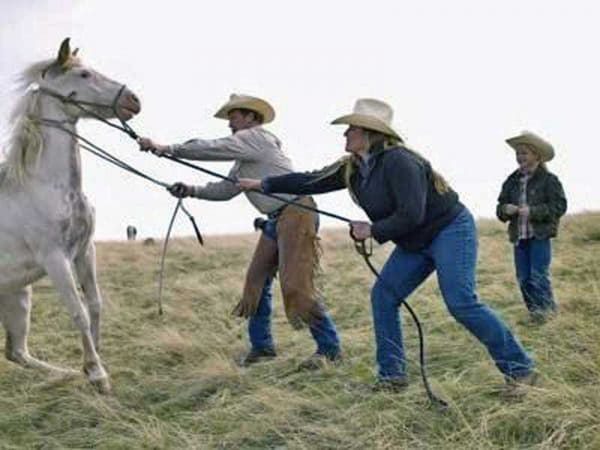

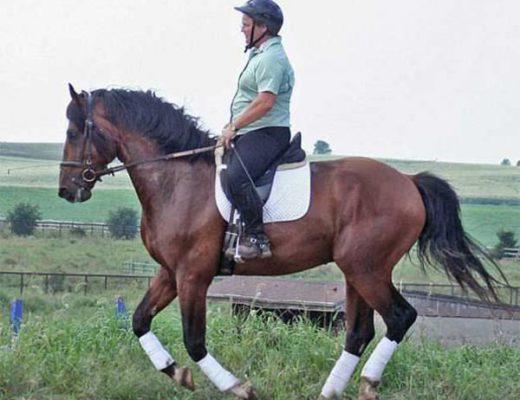
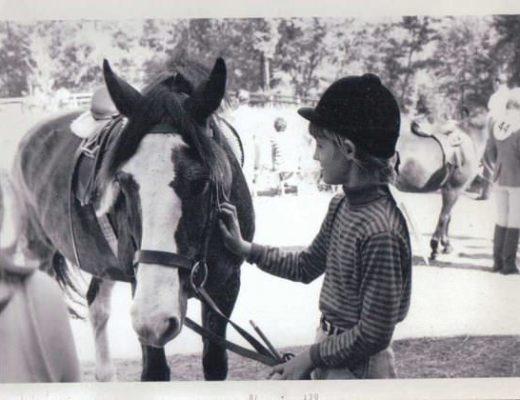
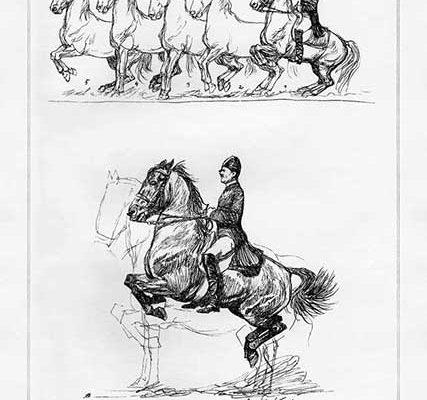


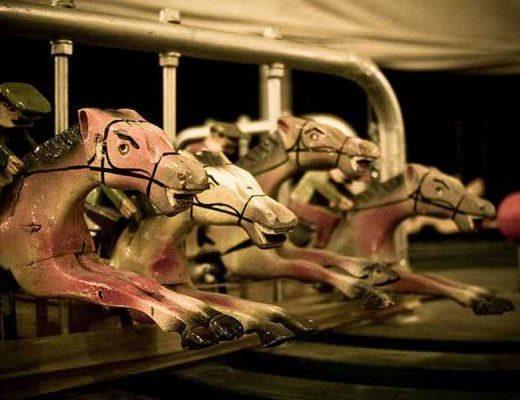
A brilliant description of what is so hard to describe!! The open learning posture of the trainer who honestly tries to get the full co-operation and full attention of the horse whilst building up the language that eventually becomes almost just a thought! So refreshing to hear you! Thanks.
A brilliant description of what is so hard to describe!! The open learning posture of the trainer who honestly tries to get the full co-operation and full attention of the horse whilst building up the language that eventually becomes almost just a thought! So refreshing to hear you! Thanks.
My fantasy solution would be less acceptable and quite illegal.
Geeze…..what a GREAT understanding of the fragile energy between man and horse. Great writing! Supports what my heart says about communicating with these beautiful animals.